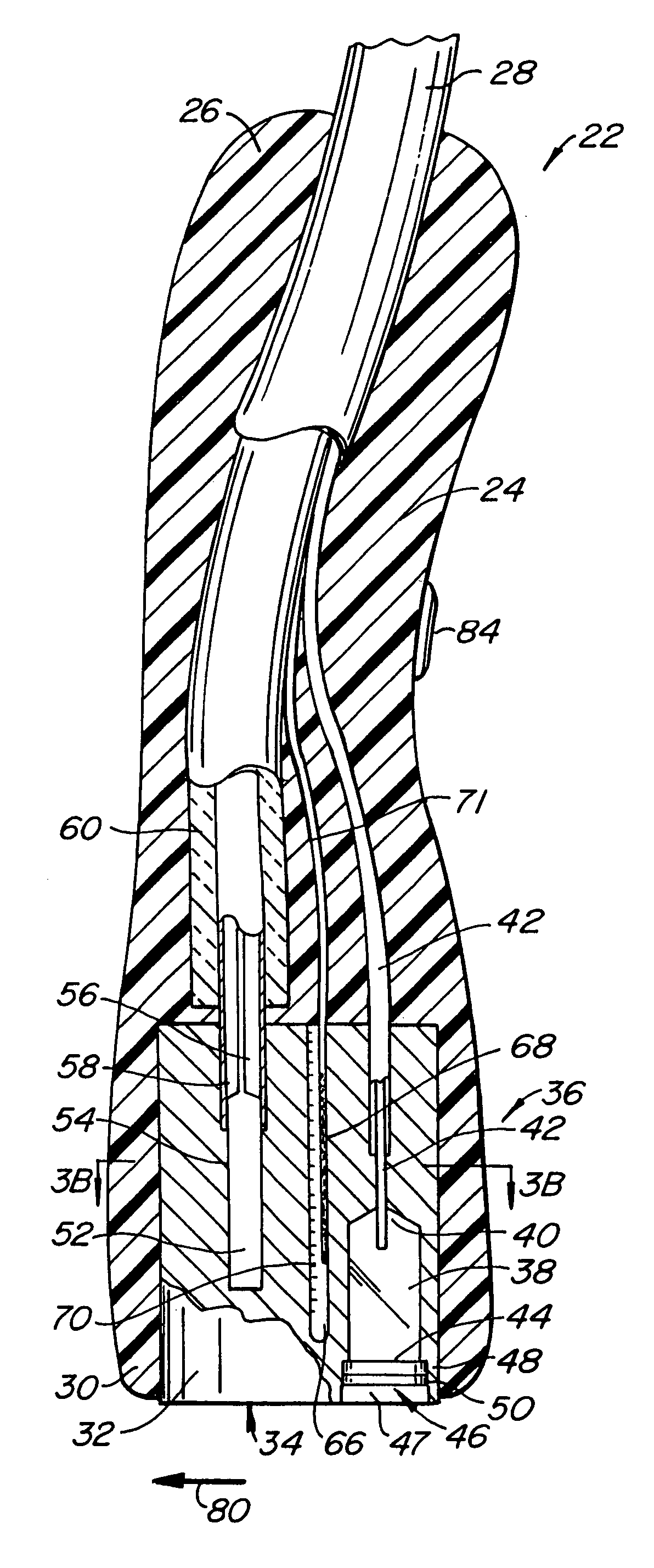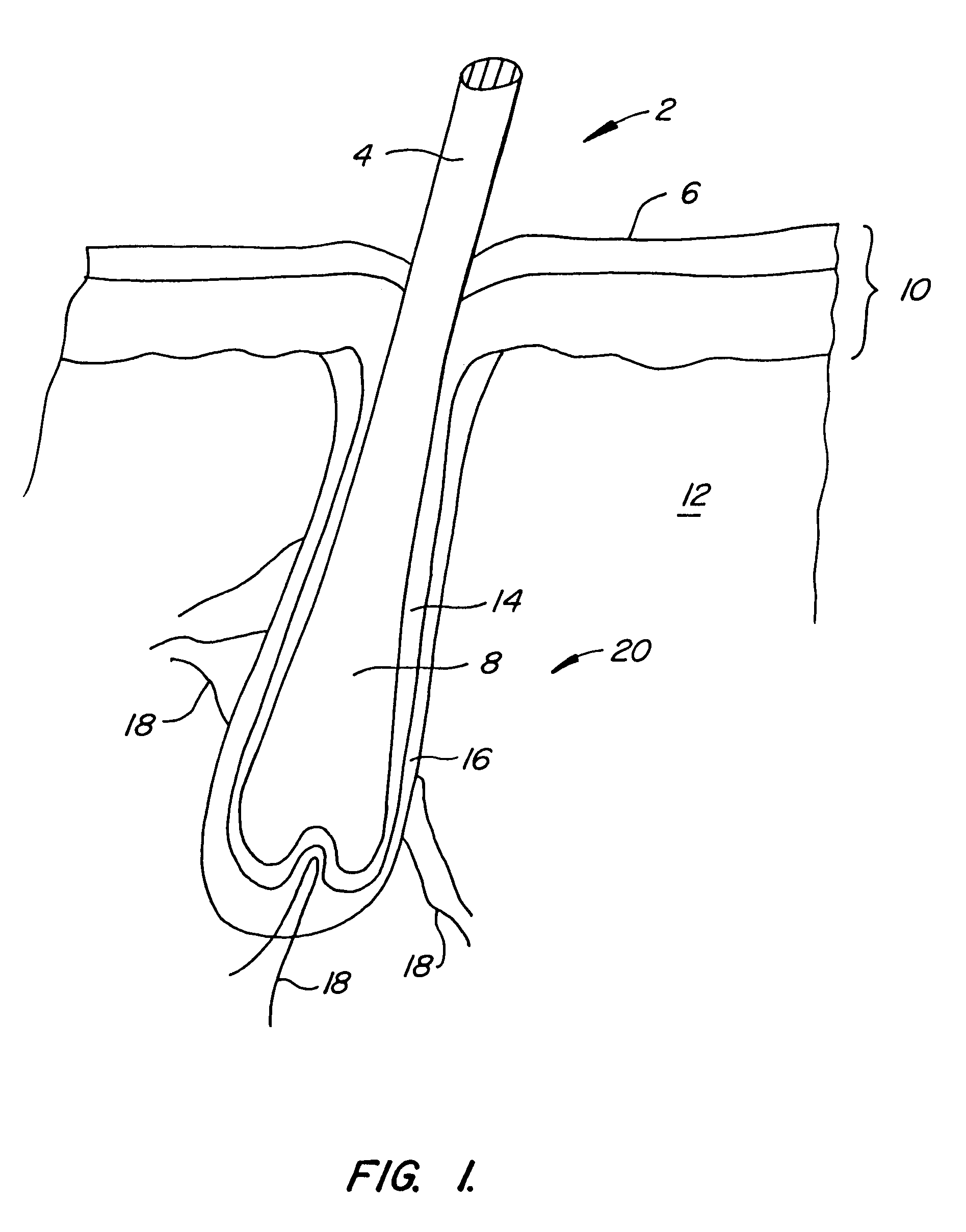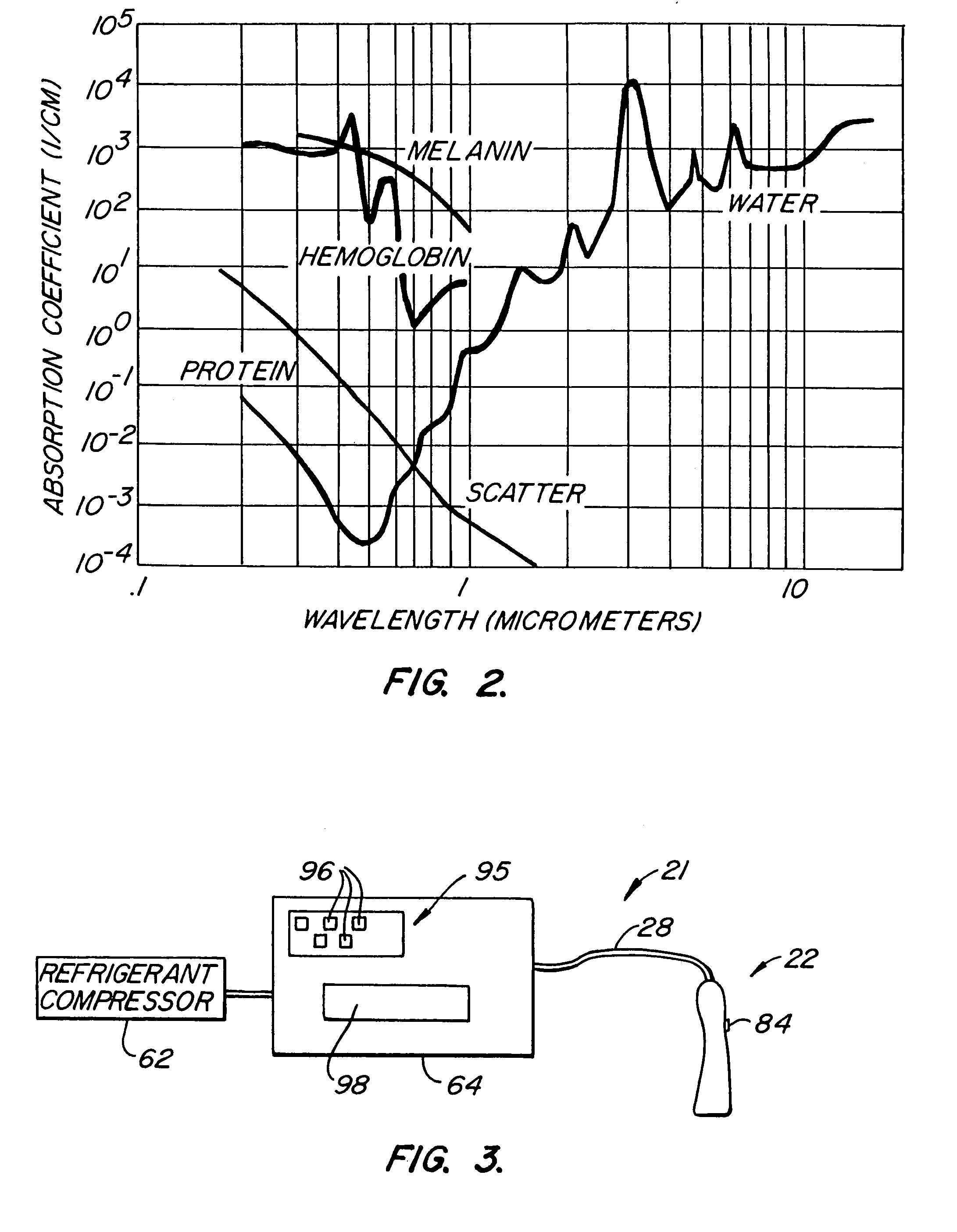Tissue treatment device and method
a treatment device and tissue technology, applied in the field of tissue treatment devices and methods, can solve the problems of heat-induced blisters, unnecessarily high epidermis peak power, and build-up of debris, and achieve high peak power, high fluence, and high peak power
- Summary
- Abstract
- Description
- Claims
- Application Information
AI Technical Summary
Benefits of technology
Problems solved by technology
Method used
Image
Examples
Embodiment Construction
[0032]FIG. 1 illustrates, in simplified form, a hair 2 including a shaft 4 extending above skin surface 6 and a root 8 extending below the skin surface. The root 8 passes through epidermis 10 into dermis 12 with the base of the root being about 4 mm below surface 6. Root 8 is housed within hair follicle 14, hair follicle 14 being surrounded by various tissues including connective tissue sheath 16 and blood vessels 18. The various tissues closely surrounding root 8 and connected with the growth of hair 2, including hair follicle 14 and connective tissue sheath 16, are collectively referred to as hair tissue 20 in this application.
[0033]Because melanin is also present in epidermis 10, with darker skin types having more melanin than lighter skin types, it is important that the wavelength be long enough so that absorption is low for the moderate concentrations in melanin in the epidermis to permit most of the light to pass through to the root 8 and hair tissue 20 where melanin concentra...
PUM
 Login to View More
Login to View More Abstract
Description
Claims
Application Information
 Login to View More
Login to View More - R&D
- Intellectual Property
- Life Sciences
- Materials
- Tech Scout
- Unparalleled Data Quality
- Higher Quality Content
- 60% Fewer Hallucinations
Browse by: Latest US Patents, China's latest patents, Technical Efficacy Thesaurus, Application Domain, Technology Topic, Popular Technical Reports.
© 2025 PatSnap. All rights reserved.Legal|Privacy policy|Modern Slavery Act Transparency Statement|Sitemap|About US| Contact US: help@patsnap.com



